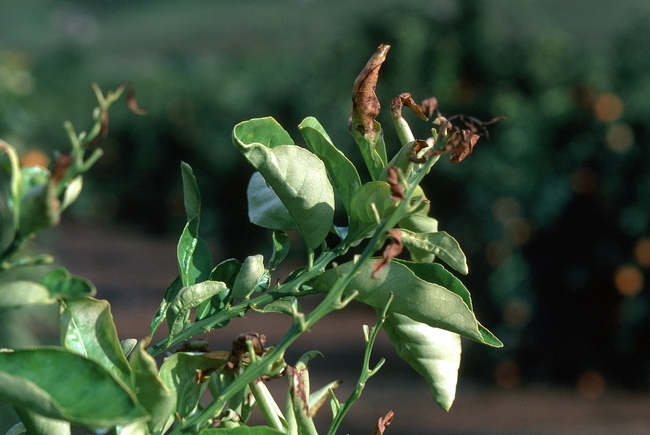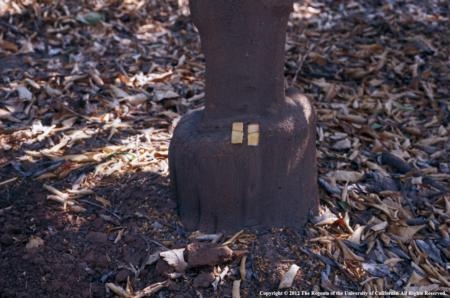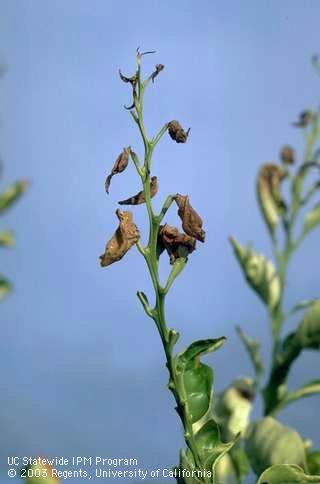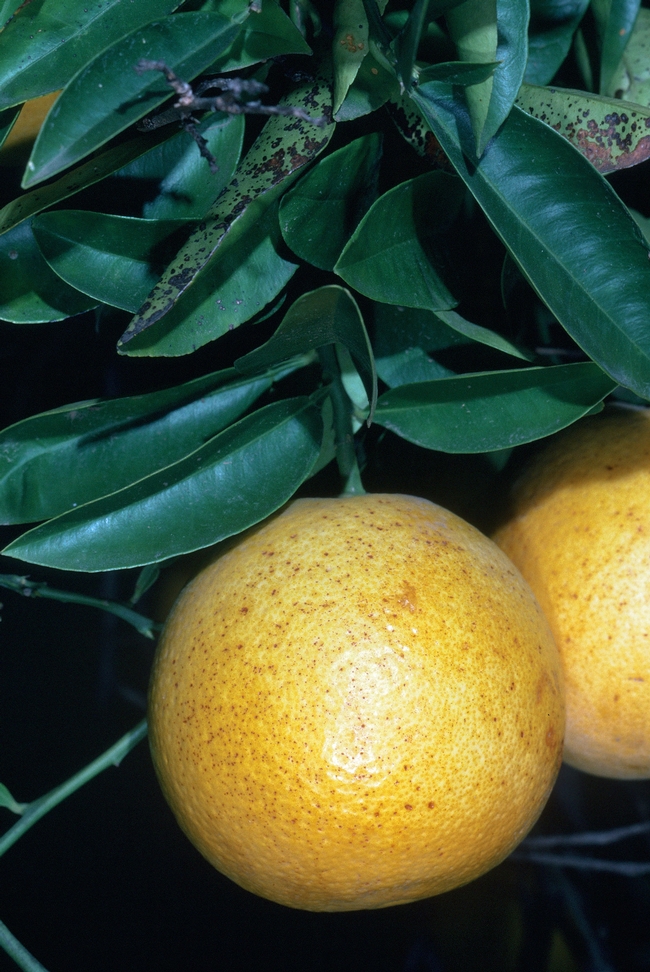Plummeting winter temperatures often lead to frost damage in plants. The damage occurs when ice crystals form within plant tissue, damaging their cells. Leaves and tender new growth are usually affected first. Initially, they will appear wilted. Then the wilted growth will turn brown or black and eventually become crispy. This means these affected parts of the plant have died.


The only thing that should be done immediately after frost damage has occurred to citrus and other woody plants is whitewashing. Whitewash should be applied to the trunk and exposed limbs. This protects the bark from sunburn, which is more likely to occur if a plant becomes defoliated. Frost-damaged plants are more susceptible to disease and insects, and sunburn increases this susceptibility. To make whitewash, mix equal parts of white interior latex paint with water. If the area to be painted is particularly rough and fissured, a thinner mixture can be applied for better penetration and coverage.

It is also important to note that frost-damaged plants are unbalanced: although their leaves have been reduced, they still have the same root system. This can result in extensive new growth over the entire plant.
To ensure that the plant reaches an acceptable balance between its leaves and its root system, the new shoots should grow at a moderate rate. It is recommended that little or no fertilizer be applied to these plants initially, and they should be irrigated less than usual until they have returned to a normal appearance. Too much nitrogen fertilizer, for example, can encourage sucker and water sprout growth, while too much water can damage roots.
Of course, it would be preferable to prevent frost damage from occurring in the first place. To read more about preventing frost damage and many other gardening topics, visit the UC Master Gardeners of Butte County website.
UC Master Gardeners of Butte County are part of the University of California Cooperative Extension (UCCE) system. To learn more about us and our upcoming events, and for help with gardening in our area, visit our website. If you have a gardening question or problem, email the Hotline at mgbutte@ucanr.edu (preferred) or call (530) 538-7201.
